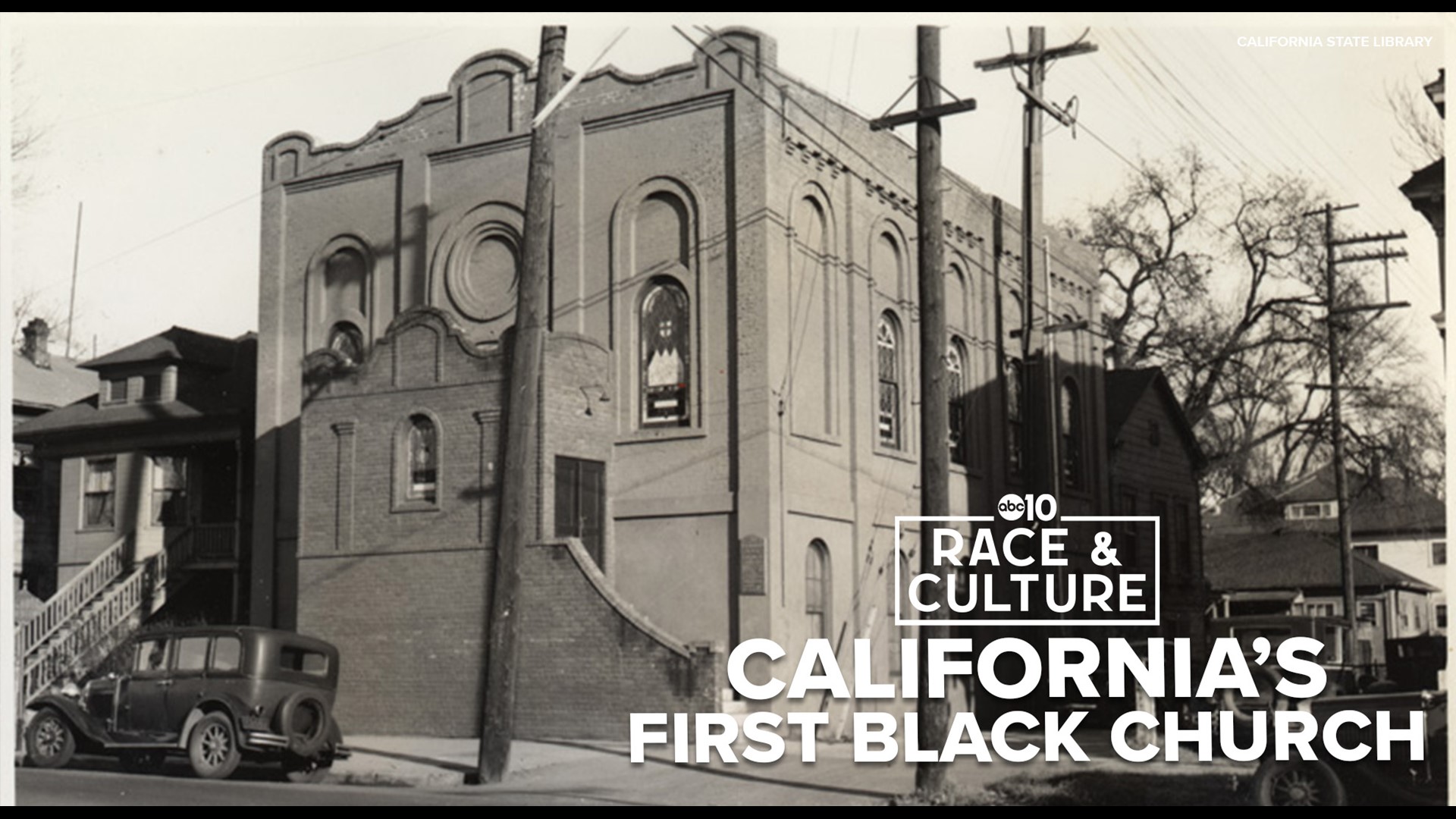SACRAMENTO, Calif. — You probably wouldn’t see it if you drove by it. Even on foot it’s not that noticeable, but if you take the cross walk at 7th and G street in Downtown Sacramento and look towards the back of the county courthouse parking lot, you will see the bronze plaque that pastor Les Robinson drove all the way up from Southern California to find. “California Historical Marker #1013. That’s where the church started right there,” said Robinson.
He is referring to the church that Daniel Blue started in 1850. Daniel Blue was pastor Robinson's great-great-great grandfather and founder of the first black church on the Pacific Coast.
“For a group of people who did such great things, this is all they have and it’s hidden,” said Robinson.
About two miles south of the bronze plaque, an old painted portrait of Daniel Blue proudly hangs on the lobby wall of St. Andrews African Methodist Episcopal Church.
“He was not the pastor or preacher, he was the chief fundraiser and supporter,” said Robinson. Daniel Blue’s original church building is no longer standing, but the church name and congregants of St. Andrews are very much like the people who attended the church Daniel Blue originally built more than 170 years ago.
Formerly a slave in Kentucky, Daniel Blue settled in California during the gold rush. He made his fortune mining along the Sacramento River and eventually bought his freedom and purchased a house where he held the first church service in his basement. “There was only 191 African Americans in Sacramento County at the time so there was not a lot of us,” said Robinson.
Daniel Blue used his wealth and education to create spaces where people of all color could learn and worship without discrimination. “Immediately after starting the church in 1850, he started a school for non-whites, African Americans, Asian, and American Indians,” said Robinson.
As St. Andrews congregation grew, the church began anti-slavery and social activism and with Daniel Blue they pushed some of the first civil rights legislation through California. Blue even helped free one of the last known slaves in state. “The first 2 agendas on their docket were the right to vote and the right to testify in court against whites. Up to that point we did not have the right to vote in California,” said Robinson.
Daniel Blue passed away in 1899 and his obituary written in the paper began like this, “Daniel Blue, a Color Citizen known to all the people of Sacramento.” Blue now rests in the New Helvetia plot, a section in Sacramento’s East Lawn. His body and the bodies of hundreds of forgotten immigrants and people of color were exhumed and relocated here 1950’s so Sutter Middle school could be built on their old grave sites. “Why don’t we know his name? Why wasn’t he in the history books? What happen to this. This is American history, California history, Sacramento history. He’s a founder,” says Robinson.
Les Robinson is a regular guest, not the preacher at St. Andrews, but the story of his great-great-great-grandfather’s church led him to a life of ministry and sharing Daniel Blue’s history. “He loved God and he loved people and to carry that torch is just an honor. So, I feel I have a new burden, a good burden to not only help my people but all people,” says Robinson.

